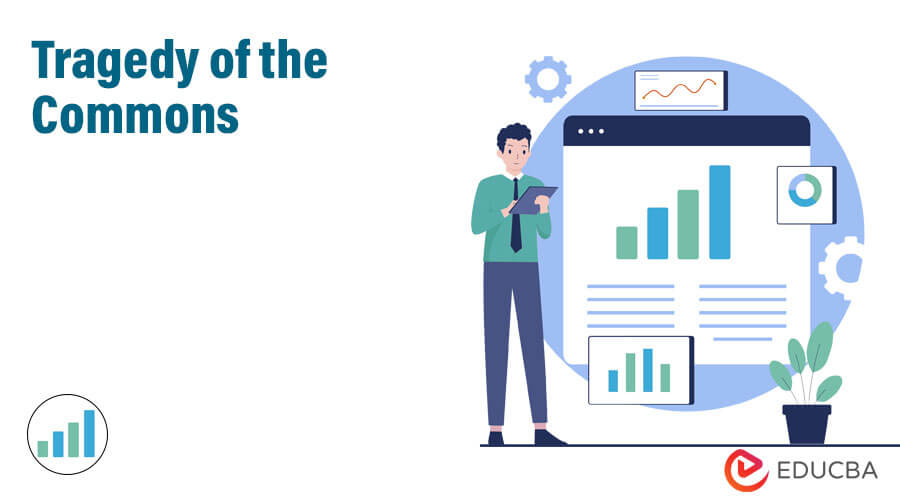Updated July 20, 2023

Introduction of Tragedy of the Commons
The tragedy of the commons is the term used for competition for finite resources where individual profit or interest fights with the societal benefits.
The world has limited resources such as water, land, etc. The tragedy of the commons is the problem in which each individual will try to consume shared resources as early as possible, which can be resulted in overconsumption and cause an imbalance between demand and supply. Because of this, resources start to become scarce and start getting depleted.
History of Tragedy of the Commons
The tragedy of the commons theory was first introduced by William Lloyd in 1833. In theory, he described ‘Commons’ as the resources which are available for use for the common public, such as Wildlife, Oil, Forests, metals, field, oceans, etc. But his theory was mostly underappreciated by other economists.
Then in 1968, Garrett Hardin wrote about this concept using the example of common pasture land, which is shared by the local herders.
Each herder wants to increase his yield and wants to consume shared resources as early as possible. So because of the overconsumption of the shared resources, common pasture gets degraded with the addition of each animal. So while individual herder gets benefits but overall shared resource gets depleted because of overconsumption which will affect the public in the long term.
Examples of Tragedy of the Commons
Below are a few examples that can be penned down:
- Global warming is one of the examples of the tragedy of the commons. For many years we have been exploiting natural resources and polluting nature. For years, companies and societies have been operating plants, running motors, and making chemicals that are degrading nature. The effect of this can be seen in the present because of the hole in the ozone layer. We can also see that the world’s temperature is increasing each year because of the overconsumption of resources and overpopulation.
- In financial terms, the 2007-08 banking crisis is one of the examples of the “tragedy of the commons.” At that time, banks used to bundle mortgage loans, and thus, each individual was getting loans irrespective of his credit score and ability to pay. In the short term, everyone was happy. But suddenly, interest rates started to move upwards, and monthly EMI increased. Many house owners started to default on their monthly payments, banks became bankrupt because of that recession occurred, and the economy got shrunk.
Criticism of Tragedy of the Commons
- Hardin’s philosophy was just a theoretical essay with no practical evidence. That’s why it is considered a myth.
- Some economists claim that this theory is used as propaganda for getting private ownership of natural resources by right-wing activists.
- Because of the rise of the internet and digitalization, sharing and networking provide greater goods for society since there is no danger of depletion of resources on the internet.
Application of Tragedy of the Commons
- It can be used in government policies to limit the use of natural resources by corporates.
- To curb the pollution level, this policy can be used to limit the use of the number of cars for each family or at the individual level.
- Taxes at a personal or corporate level can be applied by the government using this theory.
- Common resources can be converted into private property to limit the overuse of these properties.
Advantages
- This theory can be used to save the species which are on the brink of being extinct.
- In financial terms, this theory can be used to save common shareholders’ savings in the long term.
Limitations
- Hardin’s theory does not state the rational behavior of an individual; rather, it states the selfishness of the human being because a rational being sees the long-term prospects also while making some decision.
- This theory advocates the privatization of the economy, but it has been seen that in many countries, private corporations have overused the natural resources
Conclusion
The tragedy of common states is the individual acts when provided the common resources with selfish motives. If each person repeats this act for a long time, then it is more dangerous for the common resource and ultimately the same for the human being.
Recommended Articles
This is a guide to Tragedy of the Commons. Here we also discuss the introduction to the Tragedy of the Commons along with its application, criticism, advantages, and limitations. You may also have a look at the following articles to learn more –

